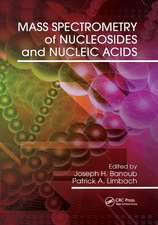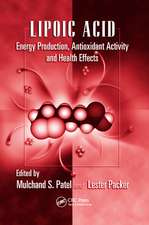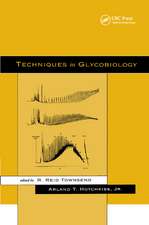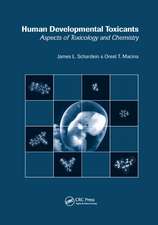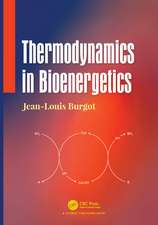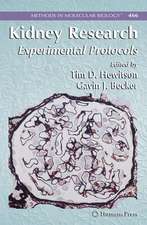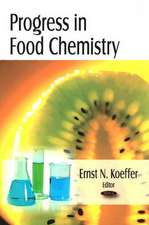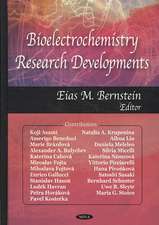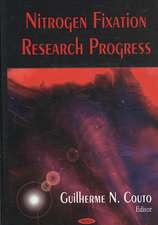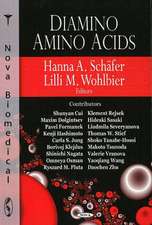Methods of Non-a-Amino Acid Synthesis
Autor Michael Bryant Smithen Limba Engleză Hardback – 23 oct 2013
Methods of Non-α-Amino Acid Synthesis, Second Edition has been extensively rewritten and reorganized, providing an up-to-date review of strategies and methods for non-α-amino acid synthesis, particularly those amino acids that are key synthetic intermediates or important compounds in their own right. It focuses on acyclic amino acids of C3–C10, but also aminoalkanoic carboxylic acids, aminoalkenoic acids, and aminoalkynoic acids. The new edition contains many updated references and has a greater emphasis on the biological importance of non-α-amino acids. In addition to an array of synthetic methods, the book offers discussions on why non-α-amino acids are important.
The book covers synthetic methods that rely on substituent refunctionalization, the conversion of cyclic precursors to acyclic amino acids, conjugate addition reactions, and enolate anion reactions and condensation reactions that lead to non-α-amino acids. It also examines reactions and strategies that lead to good diastereoselectivity and enantioselectivity during synthesis. A chapter devoted to biologically important amino acids includes separate sections on GABA, GABOB, carnitine, DAVA, statine, and other significant amino acids as well as a new section on peptides and proteins that contain non-α-amino acids. The final chapter addresses aminocyclic and heterocyclic amino acids.
| Toate formatele și edițiile | Preț | Express |
|---|---|---|
| Paperback (1) | 489.26 lei 6-8 săpt. | |
| CRC Press – 5 sep 2019 | 489.26 lei 6-8 săpt. | |
| Hardback (1) | 987.33 lei 6-8 săpt. | |
| CRC Press – 23 oct 2013 | 987.33 lei 6-8 săpt. |
Preț: 987.33 lei
Preț vechi: 1329.10 lei
-26% Nou
Puncte Express: 1481
Preț estimativ în valută:
188.92€ • 196.87$ • 156.43£
188.92€ • 196.87$ • 156.43£
Carte tipărită la comandă
Livrare economică 03-17 aprilie
Preluare comenzi: 021 569.72.76
Specificații
ISBN-13: 9781466577893
ISBN-10: 1466577894
Pagini: 242
Ilustrații: 410 b/w images
Dimensiuni: 156 x 234 x 20 mm
Greutate: 0.48 kg
Ediția:Revizuită
Editura: CRC Press
Colecția CRC Press
ISBN-10: 1466577894
Pagini: 242
Ilustrații: 410 b/w images
Dimensiuni: 156 x 234 x 20 mm
Greutate: 0.48 kg
Ediția:Revizuită
Editura: CRC Press
Colecția CRC Press
Public țintă
Academic and Professional Practice & DevelopmentCuprins
Functional Group Exchanges. Cyclic Precursors. Conjugate Addition Reactions. Enolate Anion and Related Reactions. Diastereoselective and Enantioselective Syntheses. Biologically Important Amino Acids. Aminocyclic and Heterocyclic Amino Acids. Index.
Notă biografică
Michael B. Smith attended Purdue University, graduating with a Ph.D. in Organic Chemistry. His postdoctoral work took place at the Arizona State University with George R. Pettit and at the Massachusetts Institute of Technology with Sidney Hecht. Dr. Smith joined the faculty at the University of Connecticut in 1977, where he now holds the rank of full professor. He is the author of the 5th–7th editions of March's Advanced Organic Chemistry, Organic Synthesis (3rd edition), and Organic Chemistry: An Acid-Base Approach.
Descriere
This book has been extensively rewritten and reorganized, providing an up-to-date review of strategies and methods for non-α-amino acid synthesis, particularly those amino acids that are key synthetic intermediates or important compounds in their own right. The new edition contains many updated references and has a greater emphasis on the biological importance of non-α-amino acids. In addition to an array of synthetic methods, the book offers discussions on why non-α-amino acids are important. It discusses conversion of cyclic precursors, conjugate addition reactions, stereoselectivity, and more.




